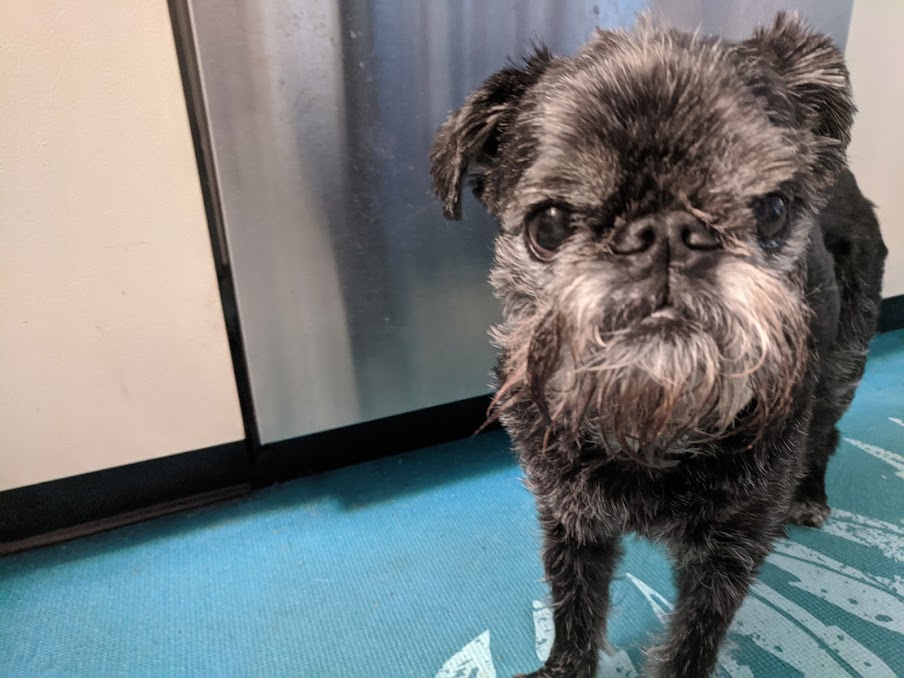
Lots of puppies adopted in the last couple of years have been deprived. They’re not accustomed to real life in the real world. There wasn’t a way to properly socialize your dog. There just weren’t the places to go, classes to take, people to see, that other dogs got to experience. The good news is that it’s never too late. Every healthy dog can learn to be calm and confident in public, regardless of age or upbringing.
The pandemic saw the shelters empty as people looked for companionship during the lockdown. That was good for both the animals and the humans. There’s no one who appreciates time spent at home more than your dog. The down side was that these dogs led a sheltered existence, so to speak. The world they grew up in wasn’t the same as the one we have now.
Socializing your dog doesn’t mean they have to like every person or dog. It means they can be calm and listen to you wherever you are, whatever’s around, whoever you’re with.
Getting socialized
Just because your puppy couldn’t go places, meet people, and do things doesn’t mean they’ll never be able to. It does mean some “remedial” socialization has to happen. If your dog grew up in the time of “social distancing,” you just couldn’t do the things that help dogs mature into confident, calm beings with public manners. Now, you can.
The key is to start small. If your dog reacts to people walking by, freaks out when bicycles pass, or can’t handle hordes of traffic, don’t plunge them right into those situations. Figure out your dog’s “comfort zone” and expand their world gradually.
Distance is always your friend when training a reactive dog. Watch your dog’s body language. As long as they’re calm and relaxed, you’re doing fine. Watch for signs of stress. They may not be as obvious as lunging and barking.
Something as subtle as stopping to scratch may be stress. It could also be an itch, so look at your dog’s overall demeanor. Where is she holding her tail, or ears? A stiffly-held tail and laid-back ears are signs of nerves. Is he panting? Are the whites of his eyes showing? All of these say “I’m not comfortable.” If that’s the case, stop where you are and just let the dog adjust.
Using dog training’s most difficult skill
This is the time you need to pull out all your patience and just wait. Hang out with your dog. Let them look around and see there’s nothing threatening. When they look at you, reward. You’re establishing in the dog’s mind that they can trust you. You won’t bring them anywhere that’s scary or unsafe.
In this week’s “Manners” class, the first skill Hope had the dogs practicing was this one – doing nothing. All of these dogs were pandemic puppies, now grown into not-very-socialized dogs. It took a while for them to figure out there was nothing going on. We were all just sitting there. Ignoring their noise-making.
When they figured out there was nothing to bark at – they all stopped barking. Of course there were a few moments when one would forget and start, which triggered all of them. But each episode was shorter and had fewer participants.
If the dog stays calm or neutral, that’s the objective. The next time you can get a little closer and start reducing the size of the dog’s comfort zone. When you reach a point where your dog can sit calmly as people walk by in your quest to socialize your dog, it’s time to ask for some help.
Enlist friends and strangers
Ask people walking by to toss some treats to your dog. Hand them some treats if you can get that close. If not, put them on a surface and step away so the other person can reach the treats. As you calmly discuss the weather with the other person, they can toss the treats near your dog. Strangers, in time, become something to be happy about.
Fran’s almost 14-year-old Brussels Griffon Tango (pictured above) was an extremely reactive dog. He would bark, lunge, and try to bite both people and other dogs. No one but Fran could get near him. Taking him out in public was impossible. That was 13 years ago – he was 11 months old when he came home.
Now, just by the simple method described here, anyone can give Tango treats, pet him, even hold him. His first “cookie ladies” are still his favorite people – other than Fran. He was able to compete in Agility and Rally at large, noisy venues full of other dogs and people. Now, as a retired elder statesman dog, he’s everybody’s friend and a perfect gentleman. (Check out Book 5: Reactive Dog Recipe in the 2-Minute Trainer’s ebook series.) Tango is proof that it’s never too late to socialize your dog.
Socialize your dog at your dog’s speed
However old your dog is, that’s how long they’ve been building their current behavior. It won’t take as long to change it, but it will take patience and consistency. Stretch your dog’s “comfort zone,” but don’t try to smash the barrier all at once. You can have the calm, polite, socialized dog you planned on. It’s just going to take as long as it takes.






